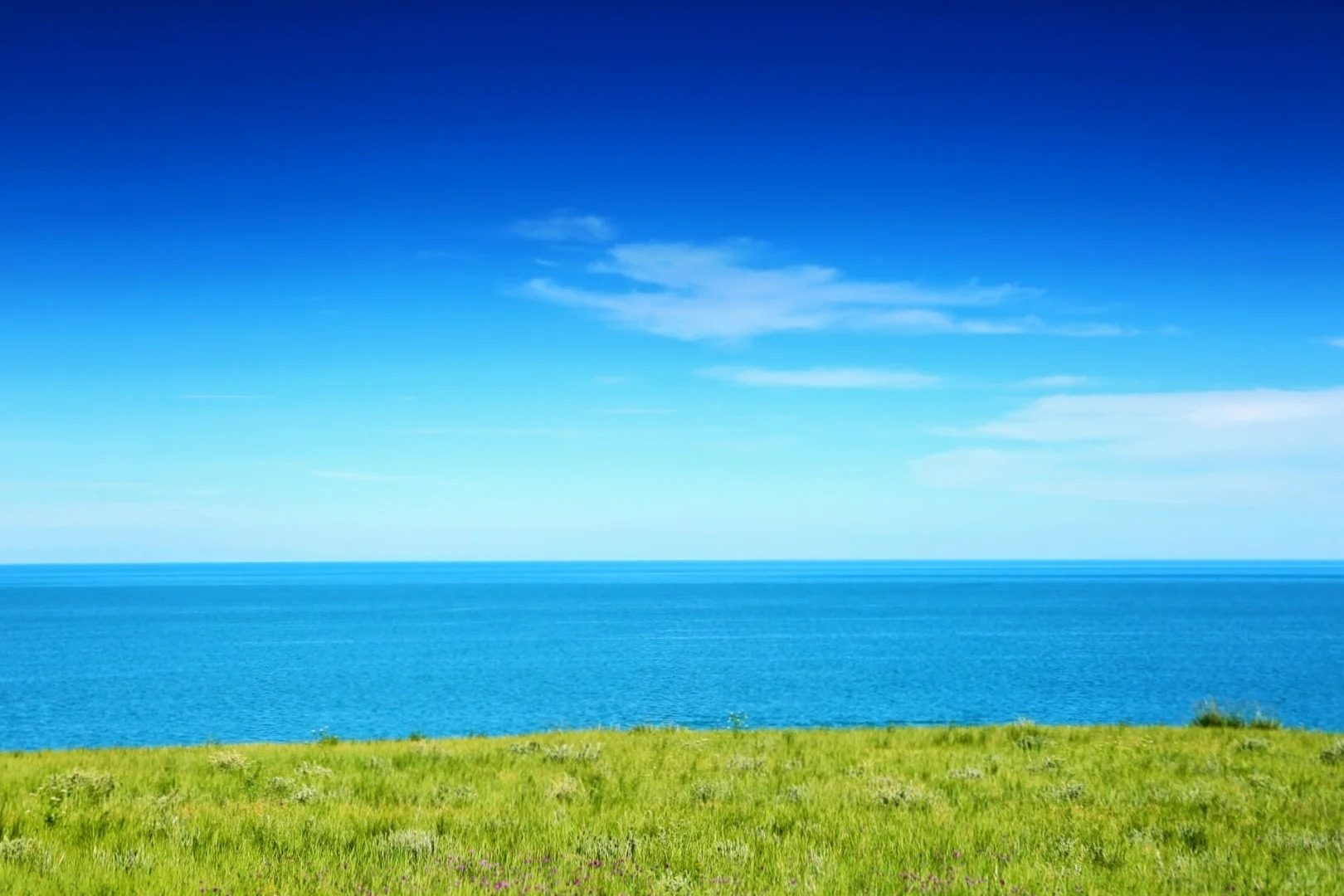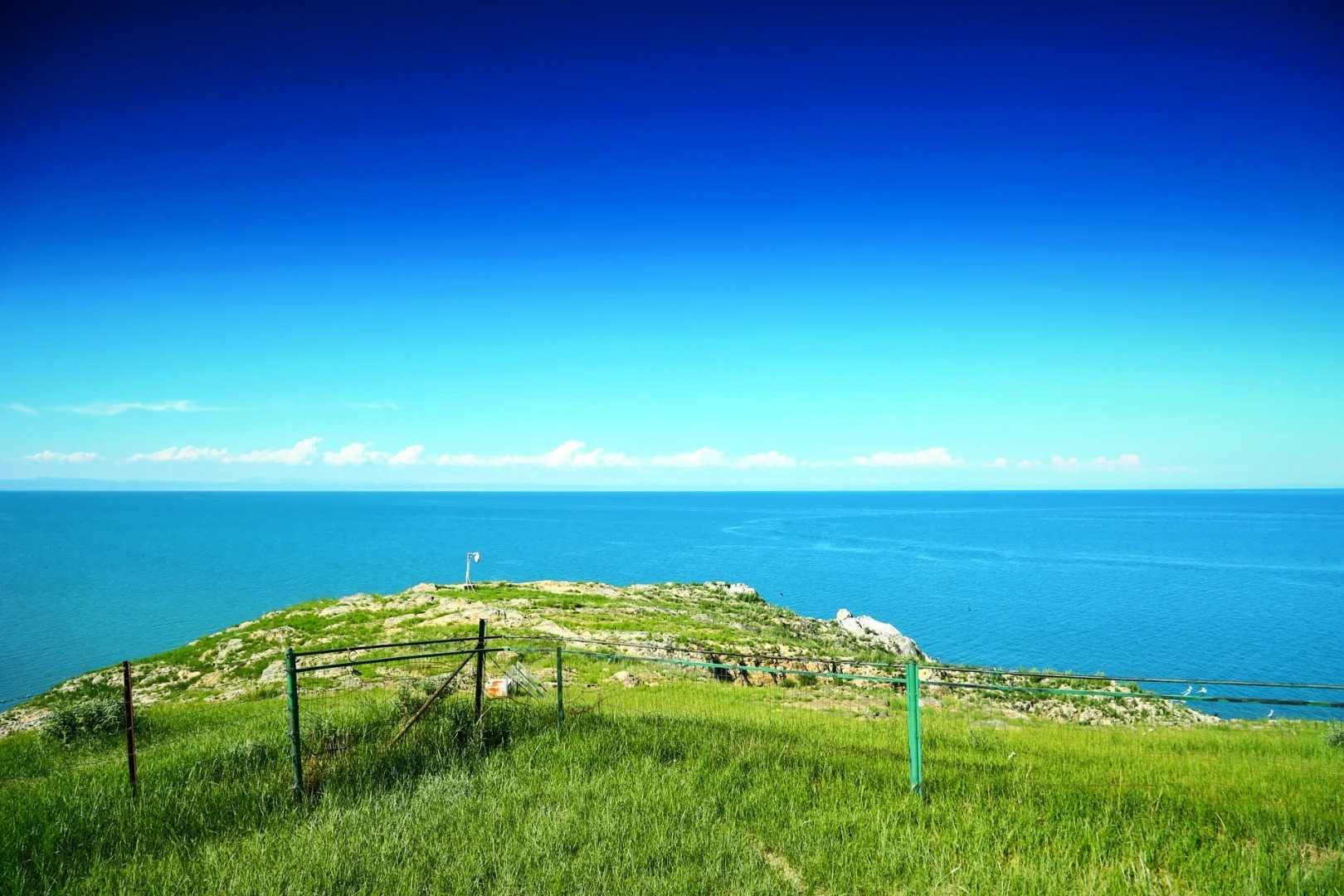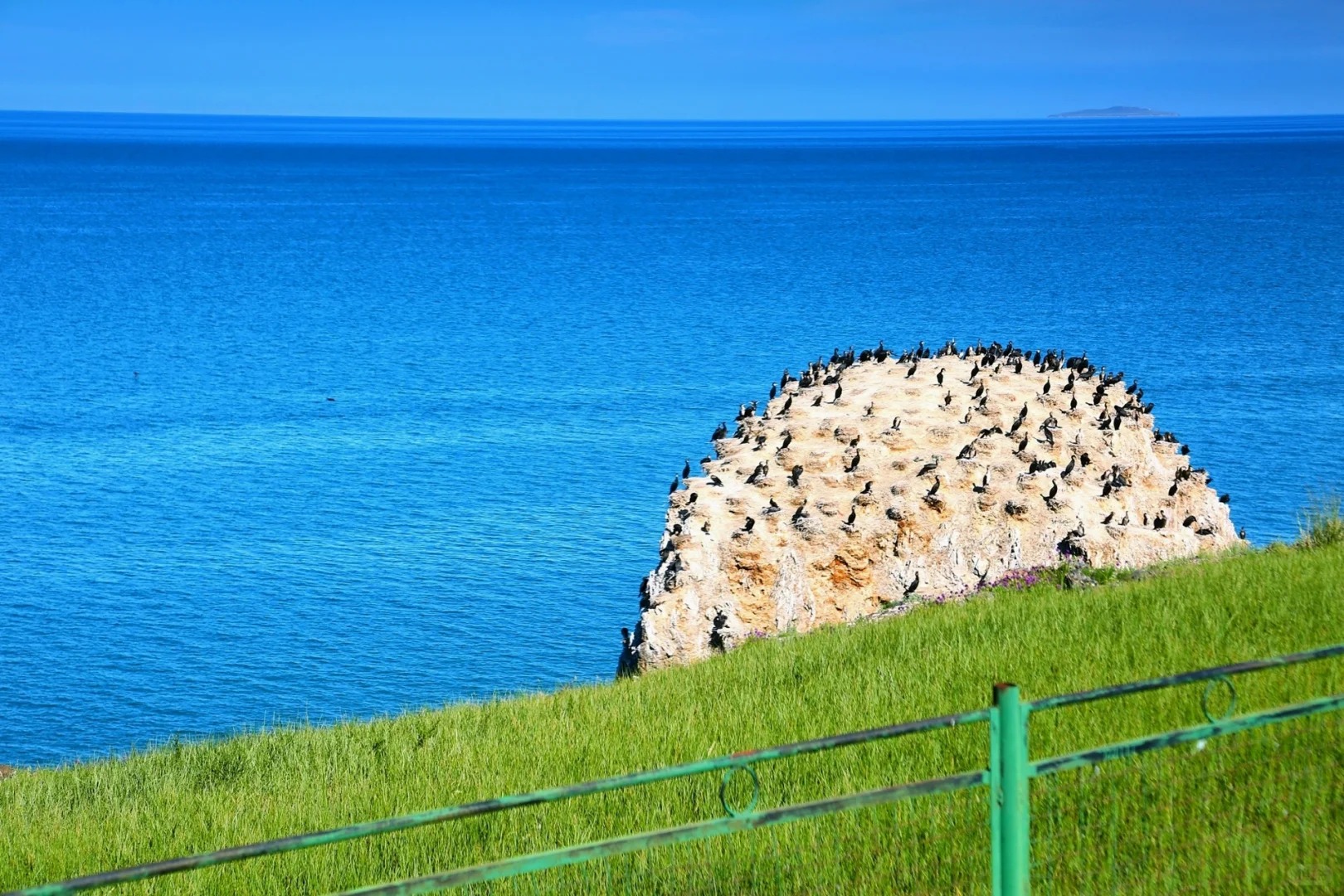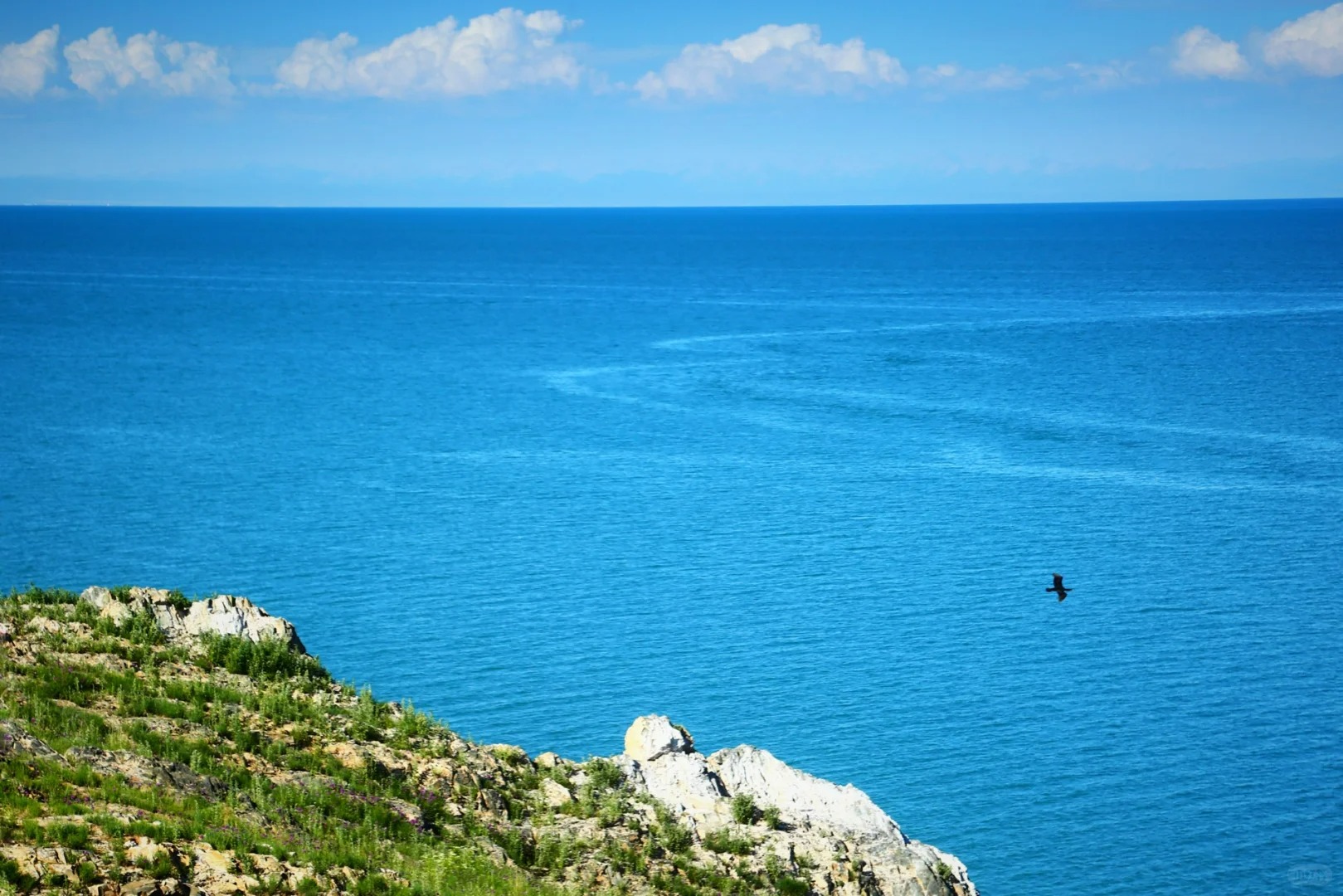Visiting Information
| Information | Details |
|---|---|
| Chinese Name | 鸟岛 (Niǎo Dǎo) |
| Location and Address | Qinghai Lake, Gonghe County, Hainan Tibetan Autonomous Prefecture, Qinghai Province, China |
| Opening Time/Hours | 6:00 AM – 7:00 PM (May to October) |
| Entrance Fee | 50 CNY (Included in Qinghai Lake scenic area ticket) |
| How to Get There | By Bus: Take a bus from Xining to Qinghai Lake, then a local shuttle to Bird Island By Taxi: Hire a taxi from Xining (approx. 3-4 hours) (No metro service available) |
| Best Time for Visit | May to October (Peak bird watching season: April to August) |
| Contact Info | Phone: +86 974 8519086 (Qinghai Lake Tourism Bureau) Email: Not available |
Overview
Bird Island, locally known as Niao Dao, is a renowned bird sanctuary located in Qinghai Lake, China’s largest inland saltwater lake. Situated in the northeastern part of the Qinghai-Tibet Plateau, this small peninsula is a crucial breeding ground and migratory stop for numerous bird species. Despite its name, Bird Island is actually a peninsula connected to the mainland, stretching about 3 kilometers into Qinghai Lake. It’s famous for its diverse avian population, stunning natural scenery, and its role in preserving the unique ecosystem of the Qinghai-Tibet Plateau.
Historical Background
Bird Island has a long history as a natural habitat for various bird species, but it gained prominence as a protected area in the latter half of the 20th century. In 1975, it was officially designated as a nature reserve to protect the diverse bird species and their breeding grounds. The island’s importance grew as researchers and ornithologists began to study the unique ecosystem and the migratory patterns of birds in the region. Over the years, Bird Island has played a crucial role in China’s environmental conservation efforts, particularly in preserving the biodiversity of the Qinghai-Tibet Plateau. Its status as a protected area has helped maintain the delicate balance of the local ecosystem, allowing it to remain a haven for both resident and migratory birds. The island’s transformation into a tourist attraction in recent decades has brought both challenges and opportunities, balancing the need for conservation with the economic benefits of ecotourism.

Natural Features
- Diverse Bird Population: The most prominent feature of Bird Island is its rich avian diversity. It serves as a breeding ground and stopover for over 100,000 birds from more than 200 species. Notable species include bar-headed geese, brown-headed gulls, and cormorants. During peak seasons, the island becomes a cacophony of bird calls and a spectacle of nesting and feeding activities.
- Peninsula Landscape: Though called an island, this feature is actually a peninsula jutting into Qinghai Lake. Its unique geography creates a variety of habitats, including shorelines, grasslands, and small hillocks, providing different environments for various bird species. The peninsula’s formation also offers visitors panoramic views of both the lake and the bird colonies.
- Qinghai Lake Shoreline: The shoreline of Qinghai Lake surrounding Bird Island is an integral part of its ecosystem. The alkaline waters of the lake support unique aquatic life, which in turn provides food for many bird species. The interplay between the lake and the peninsula creates a rich ecological zone that supports the island’s biodiversity.
- Alpine Meadows: The surrounding area of Bird Island features expansive alpine meadows typical of the Qinghai-Tibet Plateau. These grasslands not only provide a stunning backdrop but also serve as important habitats for various bird species and other wildlife. The meadows change colors with the seasons, adding to the visual appeal of the landscape.
Cultural Importance
Bird Island holds significant cultural importance, particularly in the context of environmental conservation and local Tibetan culture. For the local Tibetan population, the area around Qinghai Lake, including Bird Island, is considered sacred. Many Tibetan Buddhists believe that the lake and its surroundings are blessed by bodhisattvas, and the abundance of bird life is seen as a manifestation of this divine presence. The island has also become a symbol of China’s commitment to environmental protection and biodiversity conservation. It serves as an educational site where visitors can learn about the importance of preserving natural habitats and the impact of human activities on fragile ecosystems. The annual bird migrations to and from Bird Island are celebrated events that connect local communities to their natural heritage and remind them of the cyclical nature of life. Additionally, the island has inspired numerous artists, photographers, and writers, contributing to a rich cultural tapestry that blends natural beauty with human creativity.
Surrounding Attractions
- Qinghai Lake: As China’s largest inland saltwater lake, Qinghai Lake is a major attraction in its own right. The lake offers breathtaking views, especially during sunrise and sunset. Visitors can enjoy activities such as boating, cycling around the lake, and experiencing the unique ecosystem that supports a variety of wildlife. The lake’s vast expanse and the surrounding grasslands provide a stark contrast to Bird Island, making it a must-visit destination for nature lovers.
- Riyue Mountain: Located to the east of Qinghai Lake, Riyue Mountain, also known as Sun and Moon Mountain, is a significant cultural and historical site. It marks the traditional boundary between agricultural and nomadic regions of ancient China. The mountain offers panoramic views of the surrounding landscape and is home to several important Tibetan Buddhist sites. Visitors can explore the area’s rich history and enjoy the scenic beauty of the mountain passes.
- Chaka Salt Lake: Often called the “Mirror of the Sky,” Chaka Salt Lake is another unique natural wonder in the region. Located about 290 kilometers from Bird Island, it’s famous for its vast salt flats that create stunning reflections of the sky. Visitors can walk on the salt crust, take memorable photographs, and learn about the salt production process that has been ongoing for centuries.
- Ta’er Monastery: Also known as Kumbum Monastery, this is one of the six great monasteries of the Gelug school of Tibetan Buddhism. Located in Huangzhong County, about 25 kilometers southwest of Xining, the monastery is renowned for its beautiful architecture, rich history, and religious significance. It offers visitors a deep dive into Tibetan Buddhist culture and art, with its intricate murals, butter sculptures, and religious artifacts.

Photography Opportunities
- Bird Colonies: The massive gatherings of birds on Bird Island provide unparalleled opportunities for wildlife photography. During breeding seasons, photographers can capture images of various bird species nesting, feeding their young, and engaging in courtship behaviors. The sheer number of birds creates dramatic scenes, especially during mass takeoffs or landings. Early morning and late afternoon offer the best light for capturing these avian spectacles.
- Landscape Vistas: The unique geography of Bird Island, jutting into Qinghai Lake, offers stunning landscape photography opportunities. Photographers can capture the contrast between the island’s terrain and the vast expanse of the lake. The changing colors of the sky during sunrise and sunset, reflected in the lake’s waters, create magical scenes. Wide-angle lenses are particularly useful for capturing the expansive views and the curvature of the peninsula.
- Seasonal Changes: Each season brings different photographic opportunities to Bird Island. Spring offers scenes of birds returning and nest-building activities. Summer provides lush greenery and peak bird activity. Autumn brings golden hues to the surrounding grasslands, creating a warm backdrop for wildlife shots. Even winter, though challenging, offers unique opportunities to capture the stark beauty of the frozen landscape and hardy winter residents.
- Cultural Elements: The intersection of nature and culture around Bird Island provides interesting photographic subjects. Prayer flags fluttering against the backdrop of Qinghai Lake, local Tibetan nomads with their herds near the lakeshore, and traditional boats on the lake all offer opportunities to capture the human element in this natural setting. These shots can tell a broader story about the relationship between the local people and their environment.
Modern Importance
- Ecological Research: Bird Island serves as a crucial site for ecological and ornithological research. Scientists from around the world study the diverse bird species, their migratory patterns, and the impact of climate change on their behaviors. The island’s unique ecosystem provides valuable data on high-altitude habitats and the adaptations of various species to this environment. This research contributes to global understanding of avian ecology and informs conservation strategies.
- Conservation Efforts: As a protected area, Bird Island plays a vital role in China’s environmental conservation initiatives. It serves as a model for habitat preservation and species protection, demonstrating the importance of maintaining biodiversity. The management practices implemented here are studied and often applied to other nature reserves across China. The island’s success in maintaining its bird populations highlights the effectiveness of dedicated conservation efforts.
- Ecotourism Development: Bird Island has become a significant ecotourism destination, contributing to the local economy while promoting environmental awareness. The carefully managed tourism activities provide income for local communities and fund further conservation efforts. This model of sustainable tourism demonstrates how natural attractions can be preserved while also providing economic benefits, serving as an example for other regions with sensitive ecosystems.
- Environmental Education: The island serves as an outdoor classroom, offering visitors, especially students, a firsthand experience of biodiversity and ecosystem dynamics. Educational programs and guided tours raise awareness about environmental issues, the importance of wetland conservation, and the impact of human activities on natural habitats. This educational role is crucial in fostering a generation of environmentally conscious citizens.

FAQ
- What is Bird Island famous for?
Bird Island is famous for being a crucial breeding ground and migratory stopover for numerous bird species. It’s renowned for its diverse avian population, with over 100,000 birds from more than 200 species visiting annually. The island is particularly known for its large colonies of bar-headed geese, brown-headed gulls, and cormorants. - What’s inside Bird Island?
Bird Island features:
1. Diverse bird habitats including shorelines, grasslands, and small hills
2. Observation towers and platforms for bird watching
3. A nature reserve protecting various bird species
4. Educational exhibits about local wildlife and ecosystem
5. Walking trails for visitors to explore the area
6. Stunning views of Qinghai Lake and surrounding landscapes - Is Bird Island free?
No, Bird Island is not free to visit. There is an entrance fee of approximately 50 CNY, which is typically included in the overall ticket price for the Qinghai Lake scenic area. - Is Bird Island worth visiting?
Yes, Bird Island is definitely worth visiting, especially for nature enthusiasts, bird watchers, and photographers. It offers a unique opportunity to observe a diverse range of bird species in their natural habitat, set against the stunning backdrop of Qinghai Lake. The island also provides insights into high-altitude ecosystems and conservation efforts. - What to do in Bird Island?
At Bird Island, you can:
1. Observe various bird species in their natural habitat
2. Take guided tours to learn about local wildlife
3. Use observation towers for bird watching and photography
4. Walk along designated trails to explore the area
5. Enjoy panoramic views of Qinghai Lake
6. Visit educational exhibits about the local ecosystem
7. Participate in conservation awareness programs
8. Photograph unique landscapes and wildlife
9. Learn about the cultural significance of the area to local Tibetan communities - How do I get to Bird Island in the local city?
To get to Bird Island from Xining, the capital city of Qinghai Province:
1. By Bus: Take a long-distance bus from Xining to Qinghai Lake (about 3-4 hours), then take a local shuttle to Bird Island.
2. By Car: Hire a private car or join a tour group. The drive from Xining takes about 3-4 hours.
3. By Organized Tour: Join a tour from Xining that includes transportation and often guides.
Note that public transportation directly to Bird Island is limited, so many visitors opt for organized tours or private transport. - How to visit Bird Island?
To visit Bird Island:
1. Plan your trip between May and October for the best weather and bird-watching opportunities
2. Book a tour or arrange transportation from Xining to Qinghai Lake
3. Purchase tickets at the Qinghai Lake scenic area entrance, which includes access to Bird Island
4. Bring binoculars for better bird watching
5. Wear comfortable walking shoes and dress in layers as weather can change quickly
6. Follow designated paths and observe wildlife from a distance to minimize disturbance
7. Consider hiring a local guide for more in-depth information about the birds and ecosystem
8. Respect the environment and follow all conservation guidelines
9. Allow at least half a day for your visit to fully experience the island
10. Check the seasonal patterns of bird migrations to optimize your visit timing



